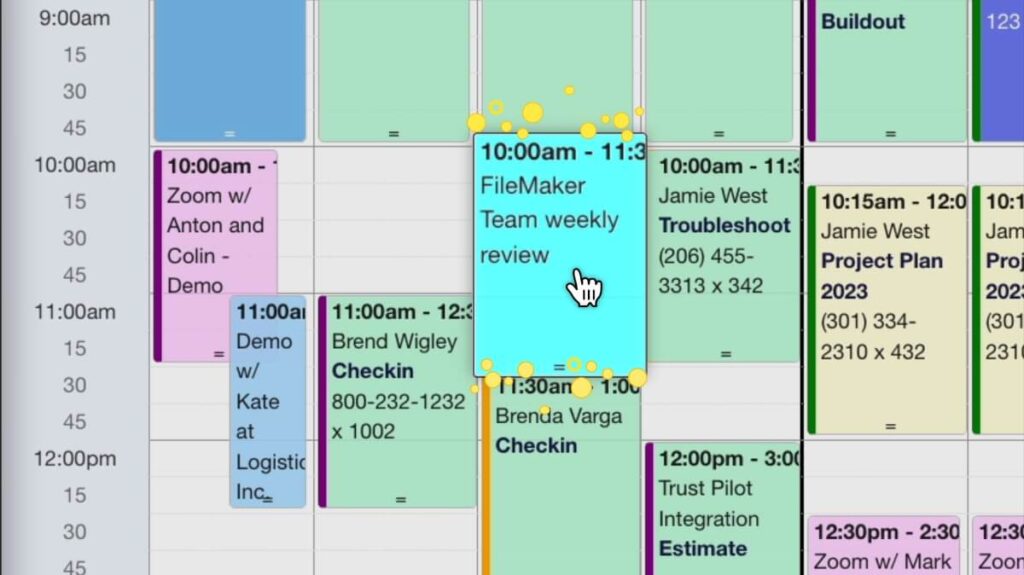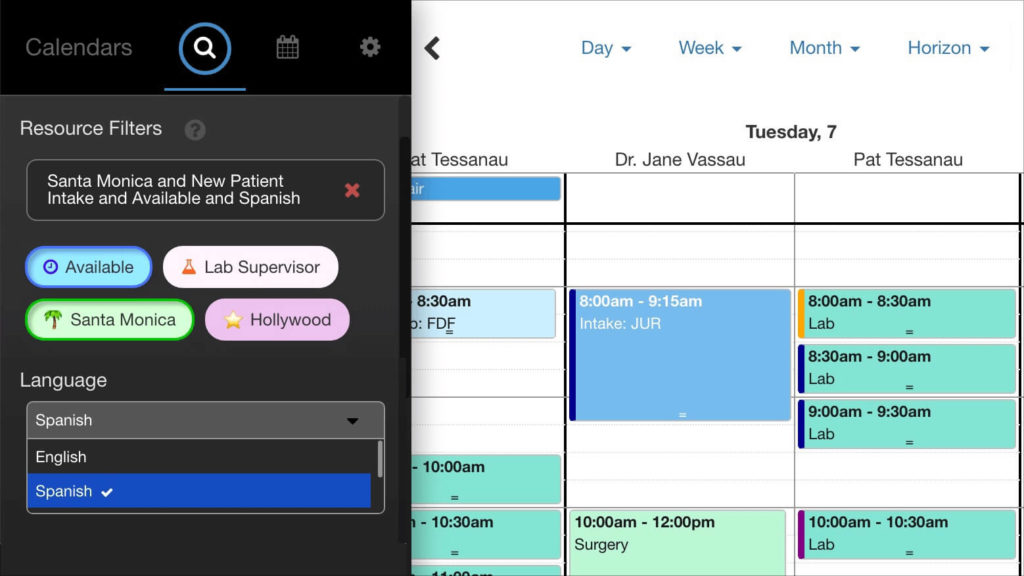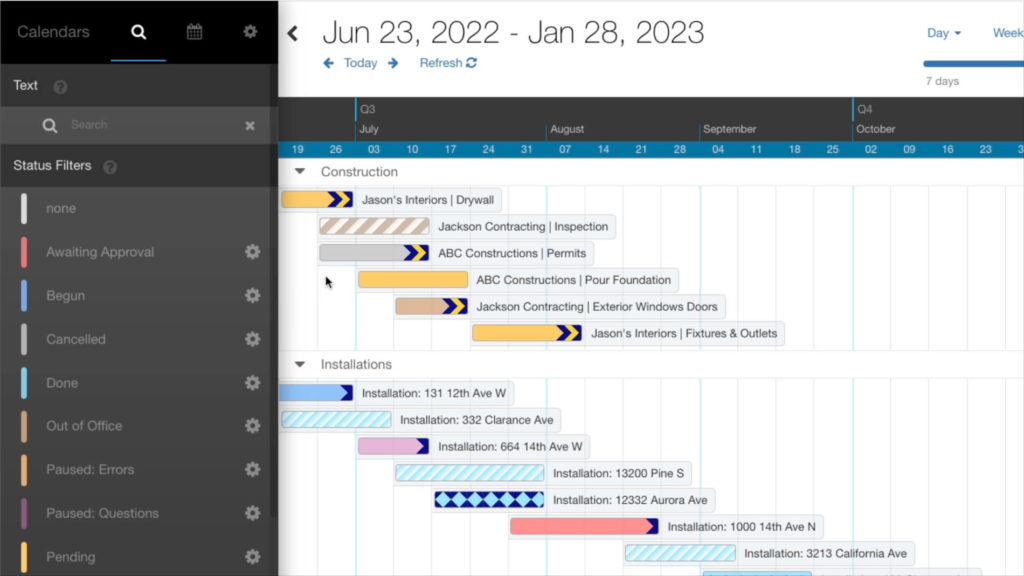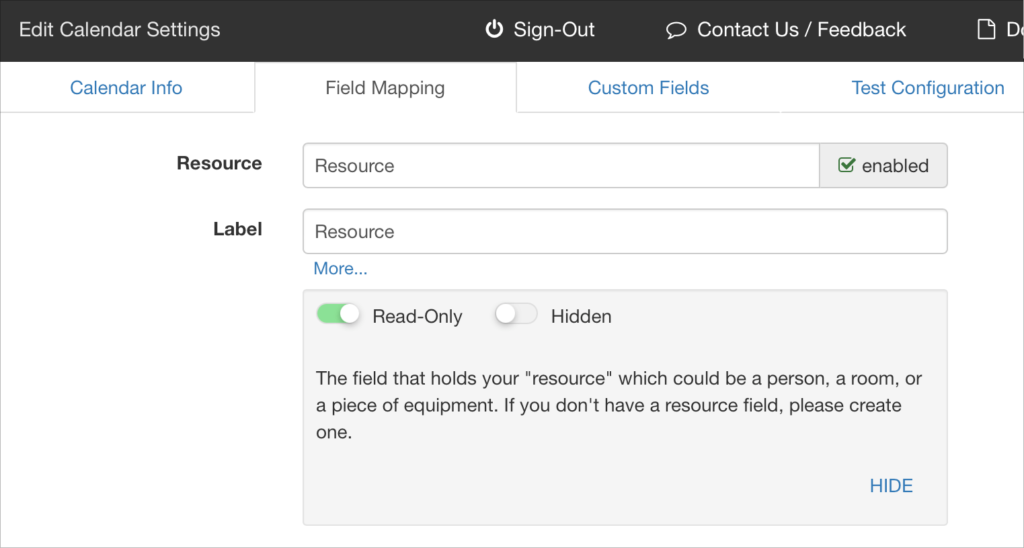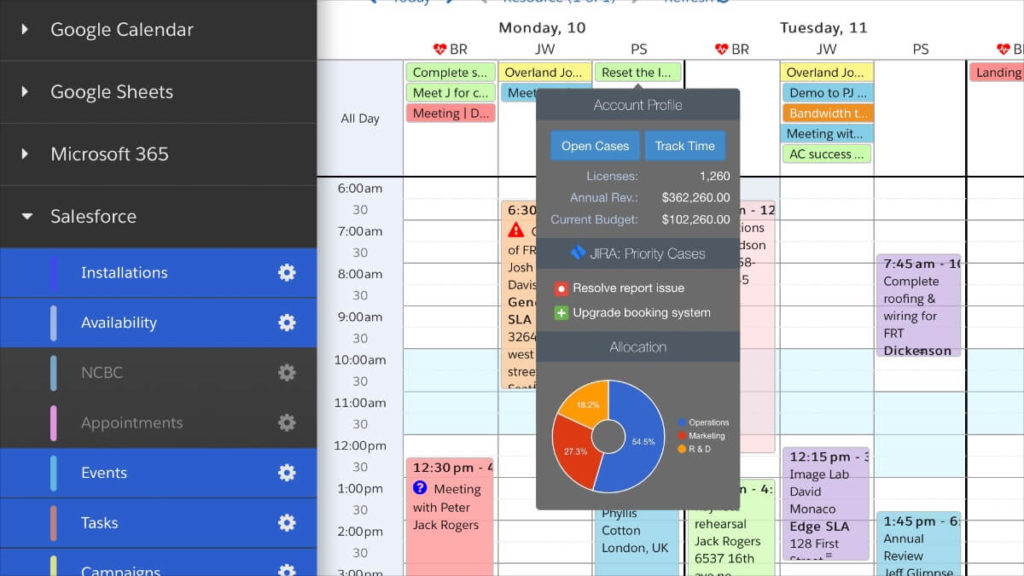DayBack has a new productivity enhancement that rewards you when you have completed a task on your calendar. Quickly change a task’s status by clicking on it while a particular key is held down. Your action will play a sound along with an animation to reward you for marking the task “done.” Each keyboard shortcut […]
For Developers
Call Center Scheduling – Filtering by Skill And Location
Click-to-Filter: Show Resource Tags in the Calendar’s Sidebar We’d love to show you the latest addition to our collection of DayBack extensions. This new sidebar enhancement allows you to harness the full power of Resource Tags when filtering your calendar by resource. Resource tags allow you to define a set of skills or attributes for […]
Background Gradients on Horizon View
Today we’d love to show you a new way to highlight special events in your Calendar. Our new Event Styles app action lets you add a custom gradient or pattern to the event boxes in Horizon view for events that match your criteria. Adding custom styles can allow you to highlight special features about the […]
Read-Only or Hidden Fields
In addition to making entire calendars read-only in DayBack, you can now designate individual fields as read-only or hidden. This is enabled with a few switches beneath each field (click “more” to reveal the switches). Read-only fields are useful when you’re rendering formula fields in the calendar and don’t want DayBack to try and edit […]
Calendar Tooltips – Charts, Tables, and Maps
Show Charts, Tables, Maps, and Images when Hovering Over an Event We love introducing powerful new ways to drive your decision-making in DayBack. Our latest app action lets you create advanced tooltips, potent data visualizations, and take action from buttons in your tooltips. You can take advantage of your Salesforce or FileMaker data by loading […]
